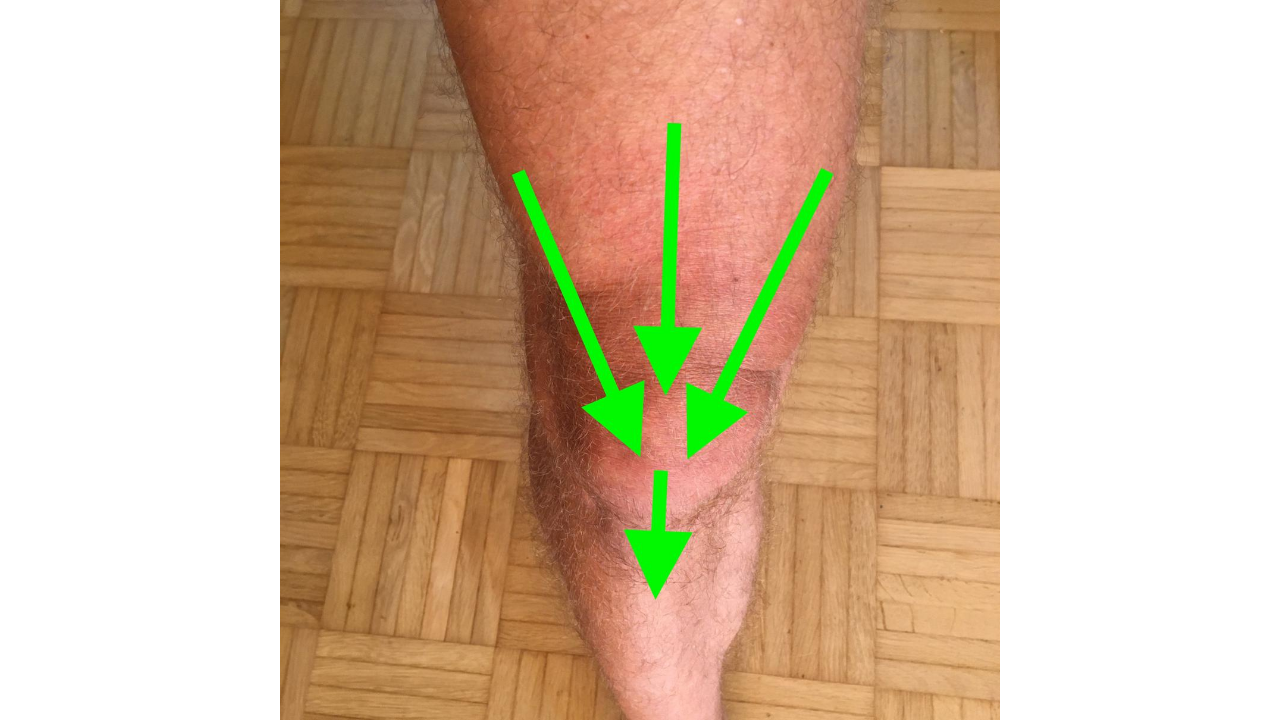
Knee Stability Results from Action
Aug 20, 2020The knee is NOT a hinge. It can twist and slide.
The shin bone / tibia ends rather flat, while the thigh bone / femur meets this flat top with two convex round bony ends. There is no connection or stability inherent in the joint or skeletal structure of the knee. All restrictions to this joint, making it appear to some as a hinge, are the result of soft tissue structures.
Depending on the density and strength of each person's soft tissue the knee joint might present with more or less of this passive support.
Real knee support requires active engagement of muscles. The resulting forces have a strengthening and supportive effect on the knee joint.
However, because of the open structure of the bony parts of the knee joint, movements in all directions are possible. Trying to support the knee only linearly, as if it was a hinge, leaves it vulnerable to strain in all the other directions.
One of the muscles that can provide an aspect of knee stability is the quadriceps, or front of thigh muscle. This muscle covers the entire front and some of the outside of the the thigh, converges on to and over the kneecap and holds on to the front of the top of the shin bone.
Knee support from the quadriceps also needs to be more than just linear.
The quadriceps muscle, as the name indicates, is composed of four parts. See image above. The centre arrow stands for two parts that are roughly on top off each other. Adequate strength and engagement of the outer and inner parts of the quadriceps stabilize the knee joint, the knee cap and the knee ligaments.
Different postures in our movement practice can train the individual aspects of the quadriceps, depending on joint angle, load and overall posture. Choosing a varied practice ensures that the knee joint stabilizing muscles can be trained and strengthened, including the quadriceps.
On the other hand, exclusively training only certain joint positions / angles, such as only aiming for a 90 degree angle at the knee in lunges for example, are insufficient for overall strength and adaptability of the knee to the challenges the knee faces in real life.
Ultimately, the knee is supported in all directions of potential movement. The quadriceps stabilizes the front, the hamstrings and calf muscles stabilize the back, the inner thigh muscles support the inner knee, and the outer gluteal muscles provide outer knee support. Ensure all these muscle areas are regularly involved in your practice to keep your knee happy and healthy in the long-term.
Movement is your choice. Get to know your body better - take an AnatomyShow course.
The ‘Knee & Thigh’ course grows your practice skills for stable strong and healthy knees.
Don't miss what's happening!
New posts, education, and movement ideas delivered to your inbox.
We hate SPAM. We will never sell your information, for any reason.

